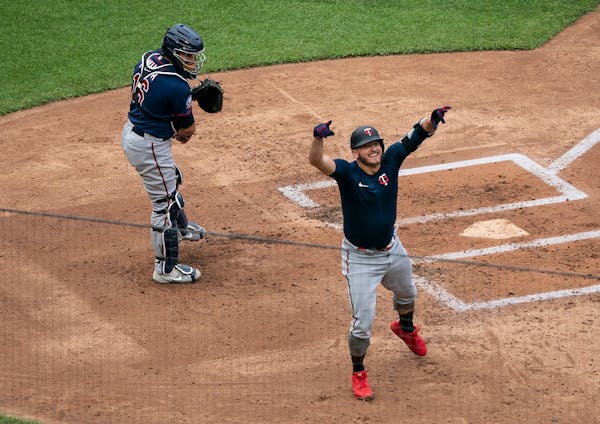The Twins' first two intrasquad games of training camp have served as a demonstration of "robot umpires," or balls and strikes called by MLB's in-stadium Trackman radar system. And after getting a look at it, none of the Twins sounded in a hurry to get rid of the humans who are normally behind the plate.
"I don't think the players would like it that much," said Randy Dobnak, who threw four innings worth of pitches Wednesday that were judged by radar. "Baseball is a game of adjustments, so over time, guys would probably adjust to it. But I don't know how long it would take."
A crew of Major League umpires, headed by crew chief and St. Paul native Jeff Nelson, will report to Minneapolis on Friday and undergo coronavirus testing. Once cleared, they could begin working Twins intrasquad games by the beginning of next week, ending the sneak preview of a system that MLB has tested in some minor leagues as it considers the future of umpiring.
"We're just trying it. We're giving the guys a taste of it," Twins manager Rocco Baldelli said. "Instead of a novice umpire strapping on the gear and going back there, or someone standing in the middle of the infield, we figured we'd give it a try."
So until the professionals arrive, the Twins have stationed advance scout Colby Suggs in the front row of seats directly behind home plate, where he relays Trackman's judgment of each pitch — some more controversial than others.
At one point, catcher Alex Avila stood up, pivoted around and threw the ball into the screen in front of Suggs in mock anger. And there were occasional yelps about borderline pitches.
"From my standpoint, it was very awkward. Marwin [Gonzalez], he was complaining about the strike zone, too," Nelson Cruz said, adding with a smile, "Typical Marwin."
The radar's letter-of-the-law zone seems more narrow than umpires call it, players said, but extends a bit higher and lower than they're used to as well. And there is no nuance to it.
"Say if a pitcher spots up inside, under a guy's hands, and [the catcher] didn't move his glove. You think it's paint," or just over the plate, Dobnak said. "But the ball was off the plate by a millimeter. Ball. Almost 100 percent of the time, an umpire is going to give you that call because you hit your spot and it looked good."
Sharp breaking balls are problematic, too.
"Guys that have the huge curveball, guys like [Dodgers lefthander Clayton] Kershaw, if the ball clips the front of the zone, you can basically bounce the ball and [radar] is going to say it's a strike," Dobnak pointed out. "You can literally bounce balls and get a strike called. That would definitely cause some problems with hitters."
Pitcher-hitter battles
Josh Donaldson celebrated like it was a walk-off home run, waving his arms around first base, and pointing to the sky as he crossed home plate. The Twins' big offseason addition drove a Lewis Thorpe pitch to the opposite field in the second inning of Thursday's dress rehearsal, a ball that loudly clanged off a seat in front of the flagpoles in the empty ballpark.
But Thorpe didn't allow another hit in his four innings, striking out four. Jake Odorizzi threw 73 pitches (54 strikes), according to mlb.com, and allowed two runs, one of them on Byron Buxton's second double in two days.
Odorizzi said he was thrilled with his outing, which ended with a 13-pitch battle with Buxton that was called off after a series of foul balls.
"That last at-bat went really good for both of us, because it shows I'm in the zone with stuff that's good enough not to be squared up, and he's got good plate discipline, recognizing, covering things, fouling balls off," Odorizzi said. "That was a pretty good way to end it. Honestly, it's a perfect way to end it."
Etc.
• Miguel Sano and Willians Astudillo remained away from their teammates while recovering from the coronavirus, and underwent another test Thursday. "We talk every day," Cruz said of Sano. "He's hitting [off a tee in quarantine]. He's doing stuff so when he's cleared to play, he'll be more likely to be ready."

Wolves-Bulls game preview: Broadcast information, injury report, key players

Gophers open men's basketball season with a victory over Oral Roberts and a loud effort from Garcia

Boras: New Twins ownership should bring in a 'very refreshed view'

Kicker stands ready to make NFL debut with the Vikings after winning tryout

